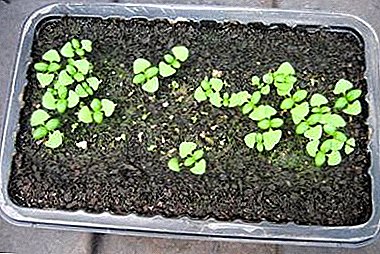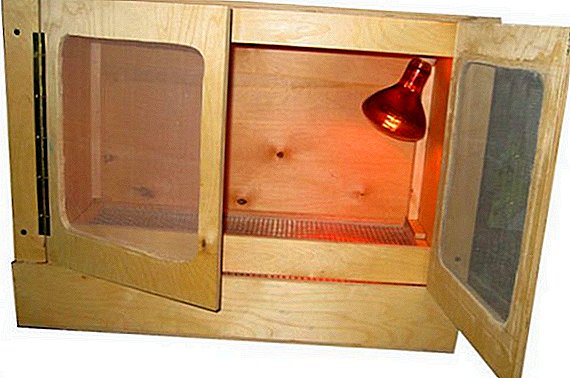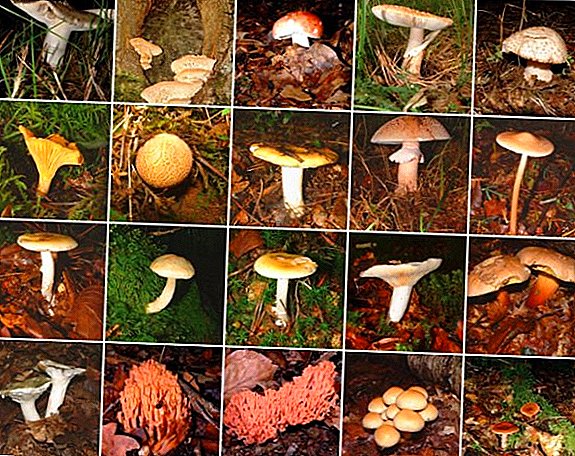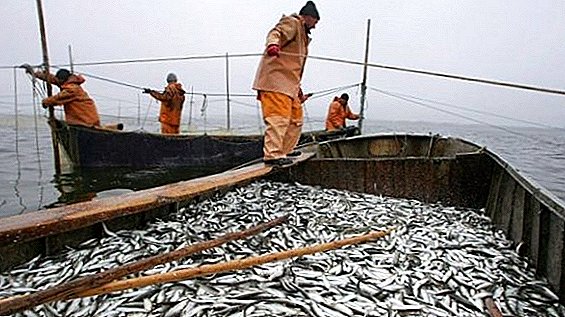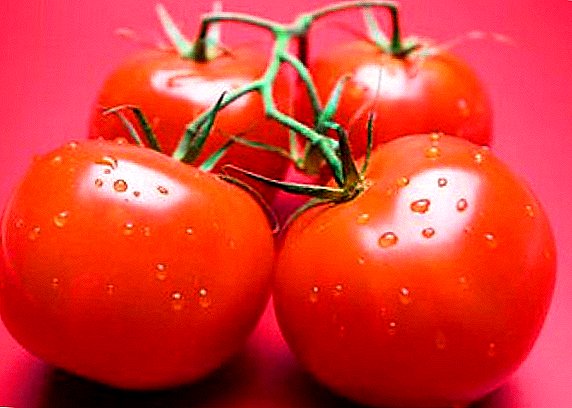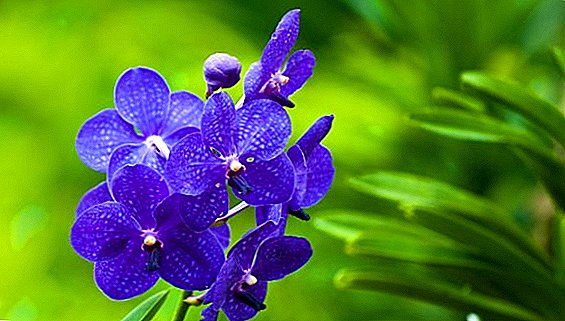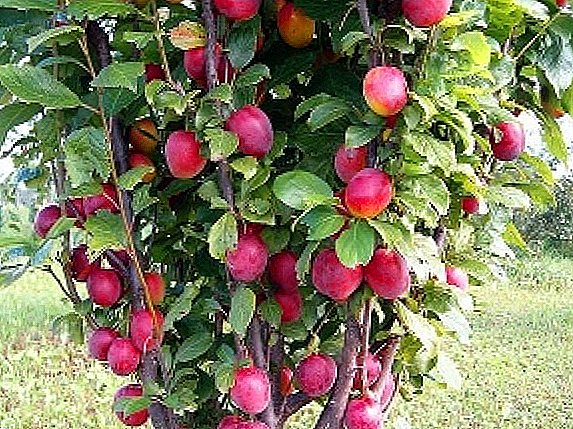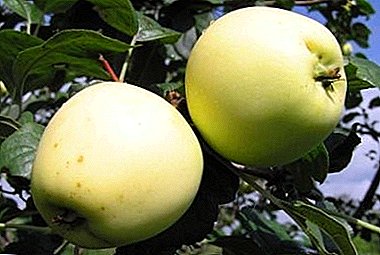
Apple tree is one of the most popular fruit and berry crops.
However, in order for the tree to settle down on the plot, it is necessary to be aware of the characteristics of growing and caring for it.
What kind is it?
Wonderful apple trees are a late summer apple tree variety. The apple keeping capacity reaches a month - this period is rather long for summer varieties. Store apples should be in the cellar.
Pollination
Mutual pollination occurs best with the Bratchud and the landed varieties.
Description of the Wonderful variety
Wonderful variety is a natural bonsai.
Since the apple tree is wonderful dwarf, the trees are very low: on dwarf rootstocks, growth reaches a maximum of one and a half meters, and on high-growth rootstocks - only two meters.
The crown of the apple tree is wide, therefore spreading out, it almost reaches the ground, as if spreading along it.
In the photo you can see the wonderful fruits of apple varieties. Basically, the appearance of apples resembles its progenitor - Eliza Ratke variety.
The fruits of this variety grow quite large - average weight is up to two hundred grams.
The fruit has a rounded shape, slightly flattened. In some cases, slight ribbing may occur.
Color spectrum - yellow and green. On the side that faces the sun during growth, there are light red intense strokes of blush on the cover. But it happens that the apples on the tree are not covered with any color.
Under the thin skin there are weak points. The pulp of fruit is appetizing, juicy, crunchy, fine grain. Sweet taste - sweet and sour, has a pleasant aftertaste.
The chemical composition of the apple has useful properties. Fruits have a universal purpose: they are used in cooking jam, compote, juice, are actively used in the manufacture of wine.
A photo


Breeding history
This variety was bred in the city of Chelyabinsk by breeders of the South Ural Scientific Research Institute. Wonderful variety is complex hybrid form obtained by crossing two varieties: the German Eliza Ratke and the Russian variety Uralskoye. The author of the obtained variety is considered to be an experienced breeder Mikhail Alexandrovich Mazunin.
Natural growth region
Wonderful apple variety able to grow in different regions throughout Russia due to its superior qualities: good frost resistance and wind resistance.
Yield
 This variety is considered skoroplodny.
This variety is considered skoroplodny.
Already at the age of three after planting begins to bear fruit.
The yield is regular and abundant, with one tree you can remove up to eighty pounds of fruit. Fruit ripening occurs in the first decade of August. By the way, the crown growth feature during the harvest period is becoming a convenient way to pick fruit.
Planting and care
Each fruit tree requires proper planting and regular personal care for good yields.
Dwarf apple trees often attract gardeners with their compactness. To avoid fraud when buying a sapling, must be purchased in special nurseries.
It is best to plant trees either in early autumn (until mid-October) or in spring (somewhere in the middle of April). Roots of seedlings must be kept in moist rags.
 It is recommended to choose a plot for planting a dwarf apple with as close as possible the location of groundwater, because seedlings are extremely susceptible to drought and can die with the slightest lack of moisture.
It is recommended to choose a plot for planting a dwarf apple with as close as possible the location of groundwater, because seedlings are extremely susceptible to drought and can die with the slightest lack of moisture.
Trees can be planted at a distance of about three meters from each other.
A hole is dug up to half a meter deep and 70 centimeters in diameter. In order for the seedling to take root in the soil, the upper layer of the earth should be separately mixed with humus. Then, about ten liters of water should be poured into the recess before filling with the mixture.
The sapling is set in this place, the grafting site of the tree should rise about a couple of centimeters above ground level. The soil around the trunk of the seedling should be well trampled and make a mound for subsequent watering..
The main rule of care for a dwarf apple tree is sufficient watering.. Summer it needs to be made every week.
After watering or after rains, the soil around the tree must be loosened during the summer period. For each apple you need ten liters of water, no less. In the summer season, two feedings are enough: either 1 to 20 chicken manure solution is suitable, or cow dung — 1 to 10 ratio.
The next pruning should be done in the period of abundant fruiting, it is necessary so that the size of the fruit remains the same, and it is also useful for extending the life of the apple tree.
In the early autumn period, pruning of damaged branches and branches growing at an acute angle to the trunk is carried out.
When a tree reaches the age of two or three years, regardless of the presence of fruiting, apple tree necessarily It is necessary to feed a complex of mineral fertilizers. Thirty grams of nitrogen, potassium or phosphorus will suffice for sufficient feeding.
Before the onset of winter, a little watering should be done so that the apple tree has enough moisture for the cold period. This is important to make it easier for the apple tree to tolerate frosts.
Diseases and pests
 Wood pests are considered the most dangerous pests of apple trees.
Wood pests are considered the most dangerous pests of apple trees.
it bark beetles and scale insects.
The difficulty of dealing with them lies in the fact that insects are deep in the bark, which is very difficult to get.
The insects eating the leaves, buds and buds of the tree are no less dangerous for apple trees: caterpillars and beetles. Also common pests are lovers of fruits that cause serious damage to the crop. BUT aphid literally sucks the life sap of an apple tree, causing maximum damage to the tree.
The main methods of pest control:
- Wood must be treated with a special chemical compound - urea or, simply speaking, urea. Copper sulphate is also widely used in horticulture. Whitewashing of a tree trunk, which needs to be produced twice a year, is perfect for people living in the bark. Do not forget about the sanitary cleaning of the bark - so you reduce the number of harmful insects.
- Insects that harm foliage, can be removed manually, and then be sure to burn.
- To fight the bark beetle, its “mink” in the bark should be pierced with wire, and then this place should be processed with a syringe. Insecticide is suitable as a chemical preparation.
- To get rid of insects that cause damage to the fruits of apple trees, you should dig up the soil in the vicinity of the tree trunk circle. This is necessary because Often these insects overwinter in the upper layers of the soil and fallen leaves. It is also recommended to periodically remove fallen leaves and destroy it.
To avoid wasting time, energy and nerves on treatment and pest control, preventive measures should be taken: spray apple trees with fungicides (copper sulfate, ferrous sulfate, Bordeaux liquid), whiten and clean the tree bark, periodically inspect the crown of the tree - a favorite place of insects for accommodation nests.
Prevent debris from growing around the tree or decaying foliage. If you follow these simple rules, you will notice that not a single pest will be able to take root on an apple tree, and moreover will not have time to breed its offspring. Poisonous baits save from rodents - to fight them a little easier than with insects. Do not disregard your tree - and it will surely please with high productivity.
 Variety Wonderful has a lot of advantages over other varieties.
Variety Wonderful has a lot of advantages over other varieties.
Apple tree of this variety is famous for its regular and abundant yield, the fruits meet the most stringent requirements of gardening.
The tree does not require special and additional protection from frost, it has good resistance to common disease - scab. Apples have high organoleptic properties, and tree care is very simple and convenient.


